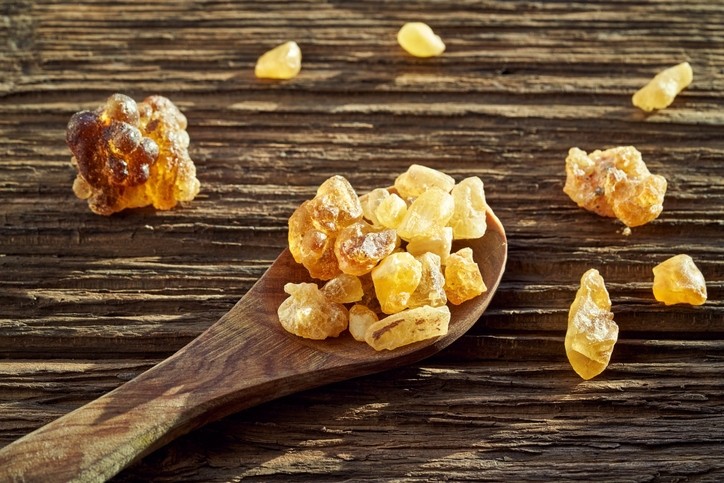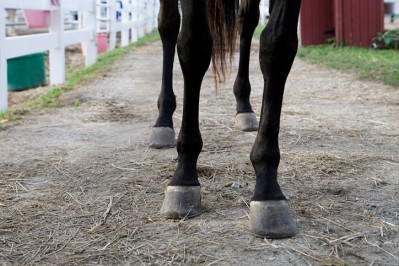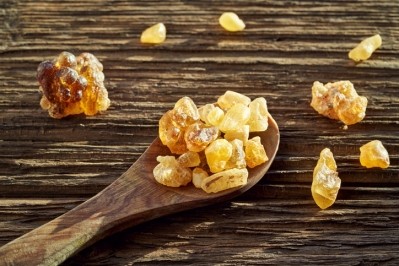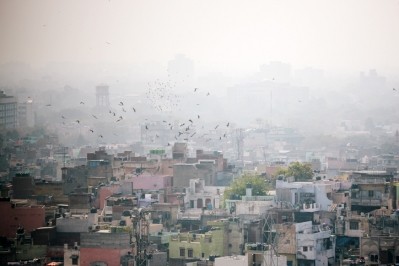PLT says third-party audit verifies sustainability of its Boswellia sources

Boswellia ingredients are sourced from the gum resin exudate of Boswellia serrata, a deciduous tree native to the Indian subcontinent, Sri Lanka and other areas of southeast Asia such as the Arabian peninsula. Closely related species, some of which may be interchangeable from a ethnopharmacological perspective, can be found in parts of East Africa.
How much pressure is Boswellia serrata under?
Presumably the greatest consumption of Boswellia, a mainstay herb in the Ayurvedic tradition, is within India itself. According to trade information cited in a 2018 review paper on Boswellia sustainability, the biggest export market for the ingredient at that time was Trinidad and Tobago, a former British colony that has a large Indian population.
Other importers listed in that paper were in order Germany, Guatemala, Mexico and the United States.
Just how much pressure the supply is currently under is difficult to ascertain. According the American Botanical Council Herb Market Report, Boswellia sales started to grow rapidly in 2015, with about $6 million in sales recorded in the mainstream channels. Sales topped $13 million those channels the next year and rose to $14.6 million in 2017. However, sales fell to $9.4 million in 2018, to $8.9 million in 2019 and fell completely off the Top 40 list in 2020, the last year for which ABC has data. (It should be noted that the list for that year was highly skewed by the large number of ingredients that saw pandemic-related sales booms. The cutoff for making the Top 40 in the mainstream channel in 2020 was Rhodiola at $8.4 million in sales.)
However, Boswellia seems to be picking up steam as an ingredient in combination formulas where its anti inflammatory properties are of interest. For example, prior to its bankruptcy, one of the last large scale product launches by GNC was a joint health formula called Tamaflex that included PLT’s ApréFlex Boswellia serrata extract as one of the three ingredients. Now that the bankruptcy turmoil is past, sales of that product within the revived retailer’s outlets are reportedly growing again.
In any case, some of concerns about the raw material supply still pertain now as they did in 2018, when the ingredient’s popularity peak was only recently past. The issue is that the tree grows only slowly and can produce only so much resin per harvest season without weakening the tree. So, like many other sources of botanical dietary ingredients, the supply is somewhat inelastic.
Audit finds PLT’s supplies are secure
However, PLT said the new audit, produced in concert with botanical supply expert Trish Flaster of Botanical Liaisons, LLC, shows that the company’s supply is in good shape. One issue with any wildcrafted or cultivated material is whether the habitat or growing area for the botanical is being given over to other uses such as urban development, industry or higher value agricultural crops or animal husbandry operations.
According to the audit, PLT’s Boswellia supplies come from trees grown in the central Indian State of Madhya Pradesh which is a less densely populated forest and hill region. Unlike the valley of the Ganges, one of the world’s mostly densely populated and heavily cultivated regions to the immediate north, the area suffers much less land pressure.
Seth Flowerman, president and CEO of PLT Health Solutions, said the company has fostered a relationship with these Indian Boswellia harvesters for decades now.
“My family and PLT have been working with partners collecting Boswellia serrata for nearly 40 years. Every year, we are finding new and exciting health promoting uses for Boswellia serrata that have the ability to help people live happier, healthier lives, and today, extracts of Boswellia serrata form the basis of some of the leading products at PLT. We have a responsibility to be good stewards of these resources and to support the communities whose livelihoods depend on it,” he said.
Heterogeneity of Boswellia supplies a complicating factor
The 2018 paper by Brendler et al. raised some long term sustainability concerns for Boswellia serrata. The authors did note, however, that the picture is clouded by insufficient information, with the various streams of Boswellia raw material lumped together.
Flaster noted this as a complicating factor as well, which is why source-specific audits like the one she cooperated on with PLT are important.
“Much of the reviewed literature focuses on other Boswellia species, from Africa and the Middle East, which are related to essential oil and fragrance supply, rather than the Indian-sourced species with beneficial health benefits typically used for dietary supplement or foods,” she said.
Within India, and more specifically within PLT’s specific harvesting area, there are number of factors that support the long term viability of the source, she said.
“These advantages include the economic incentives, inheritance system for trees and sense of ownership, the long lifespan of trees, the tremendous environmental care taken by the collectors, the natural habitat in Madhya Pradesh that is largely undeveloped and native, as well as the minimum pricing restrictions, inventories, and training programs supported by industry and government,” Flaster added.
Indian government keeps taps on health of resource
The audit notes that the Indian government, through its Forestry Service, keeps tabs on this important natural resource. Tree populations are regularly inventoried, and the service trains field operatives and fixes prices. According the audit, the Forest Service’s current assessment states, “[T]here is an abundance of Boswellia forests distributed among sixteen states across India. Therefore, there is no perceived threat for the Boswellia population.”
Flowerman said the audit is part of the company’s People+Planet Initiative which was formalized in 2021. The initiative, which takes its cues from goals put forth by the United Nations, seeks to support the Boswellia famers with health and educational resources.
















